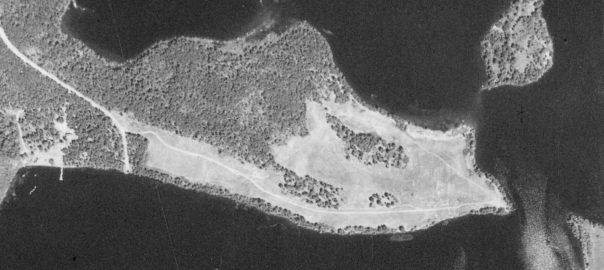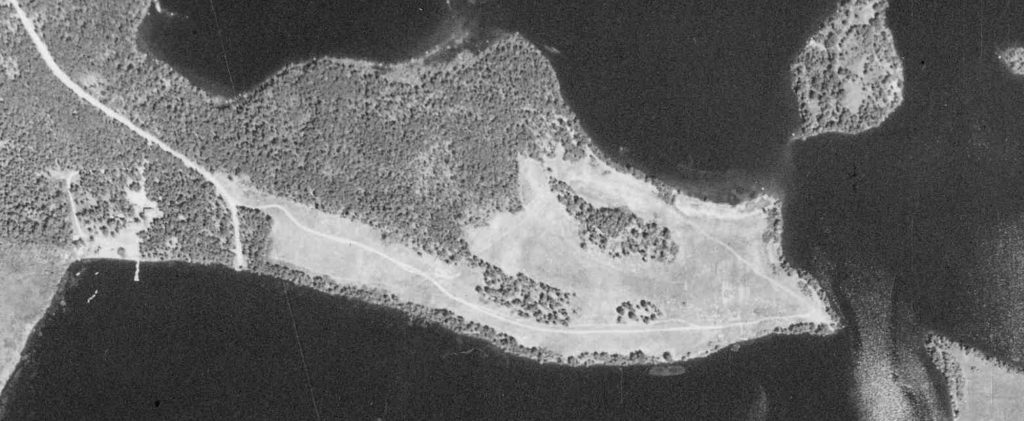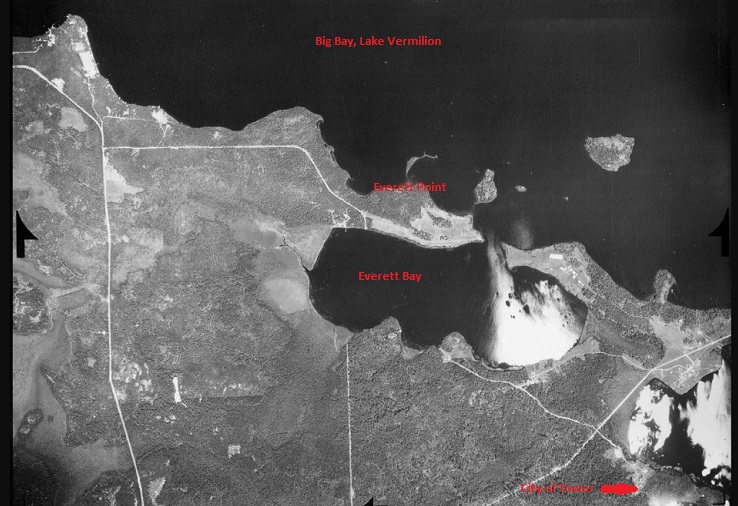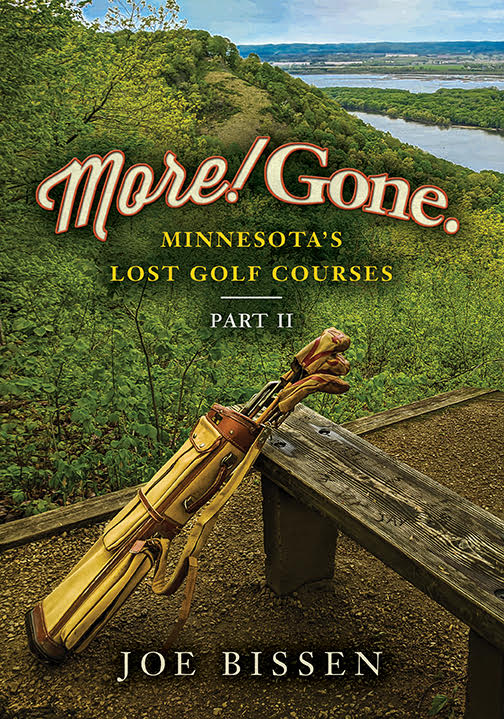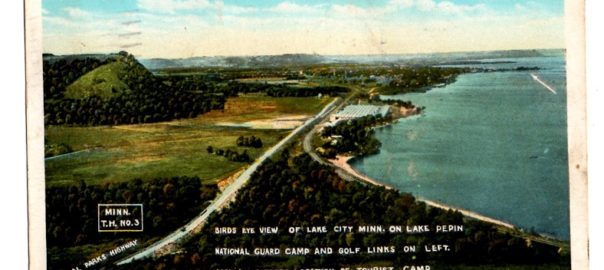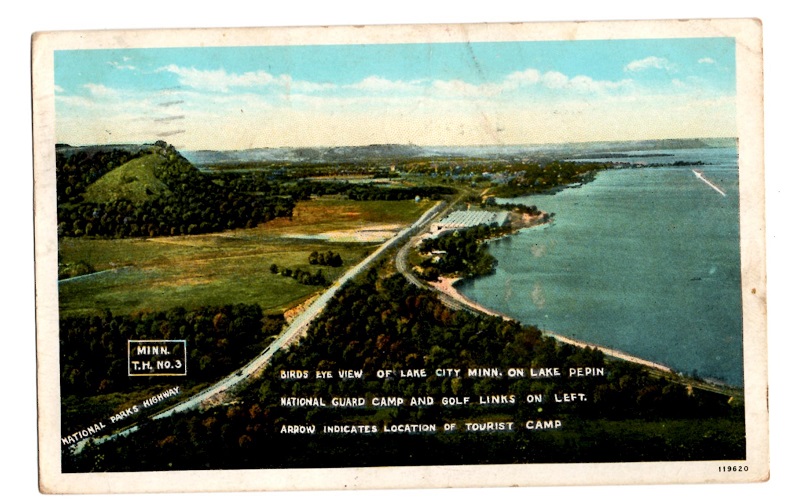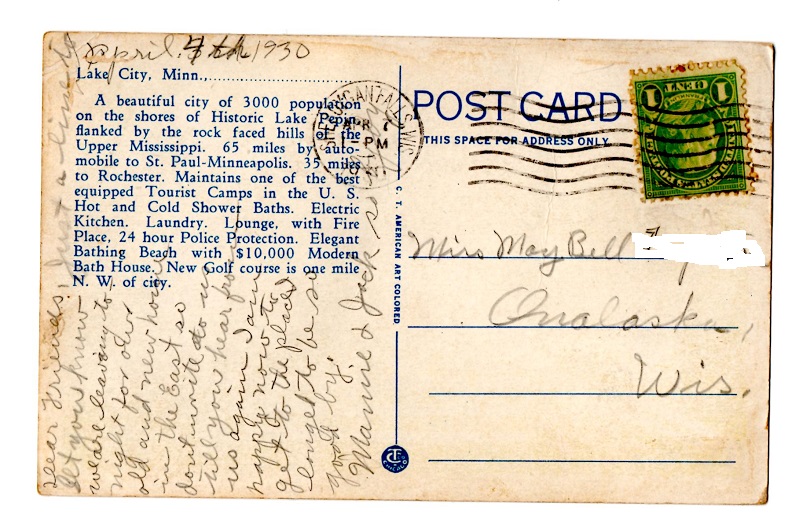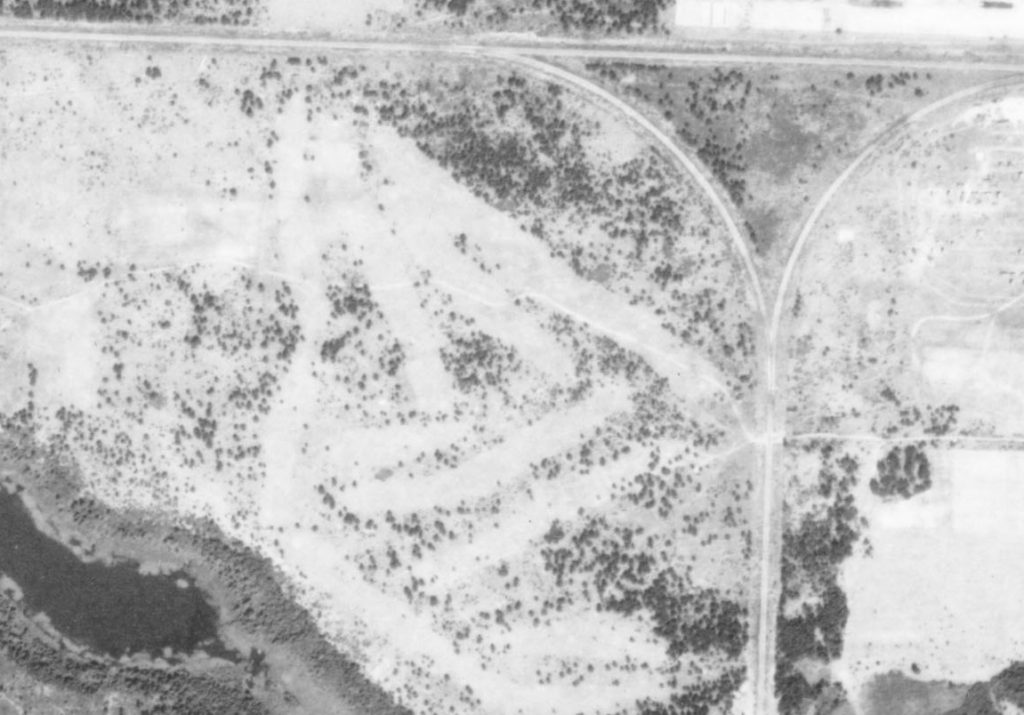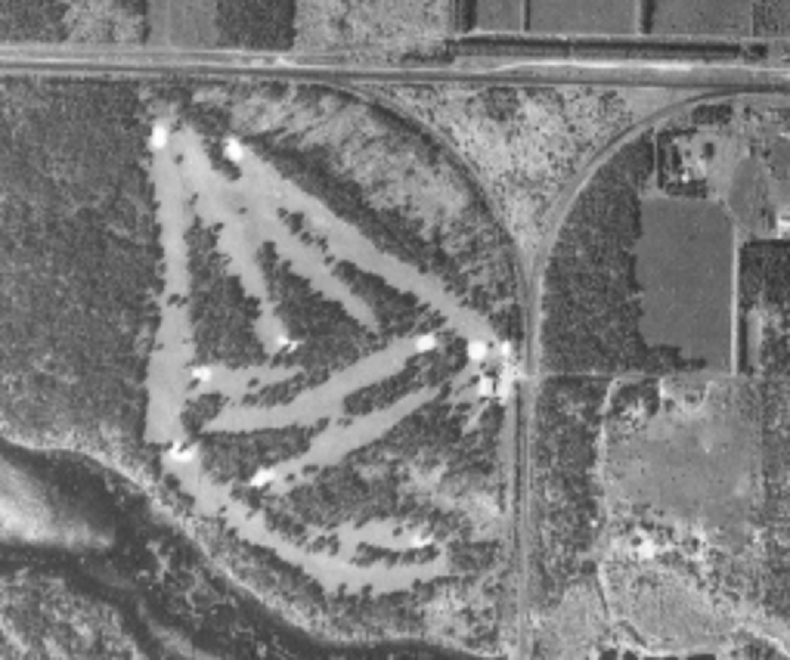Searching for the possibility of a lost golf course in the next county over, I wound up six counties up and 206 miles away.
That’s a heck of a rabbit hole.
I’ll get back to that nearby lost course someday, if there actually is one. But I thought I’d pass along what I found when I started digging — for the first time since More! Gone. was published a few weeks ago — for lost golf course No. 227 in Minnesota. (I’ll find it sooner or later.)
Flipping through, in a virtual-reality sense, the pages of old Minnesota newspapers, I came upon a short story on the lost Everett Point golf course near Tower. “Lake Vermilion has a new golf course,” read a headline in the Minneapolis Sunday Tribune of July 24, 1927.
“A new nine-hole course, known as the Everett Point golf course, has been officially opened at Lake Vermilion,” the story began. “A short road connecting highway No. 77 with the course was recently completed.”
I have written about the Everett Point course before. It was covered, in a manner of speaking, with four paragraphs near the end of my 2014 lost-course book, Fore! Gone. Minnesota’s Lost Golf Courses, 1897-1999. The entry noted a 1926 Moorhead Daily News story that said the course would be “five miles from Tower by boat” and that greens fees would be $1.
Coming across the course again this week rekindled my interest. First, I tracked down a 1940 aerial photo of what must certainly have been the golf-course property, appearing in light gray (everything else is trees, road or water):
Here is a wider view of the area, again in 1940. Downtown Tower is about 4.5 miles southeast of the center of Everett Bay. You should be able to click on either photo for a zoomed-in view.
Aerial photos from digital files of John Borchert Map Library, University of Minnesota.
Zooming in on the top photo, I see no signs — whether greens or obvious fairway routings — that the golf course remained in operation in 1940. That makes me twice a liar, because in early references on my lost-course map, I credited the course with a life span of 1921-40. In reality, I suspect it was much shorter.
That covers about half the rabbit hole. Thing is, once I get started, it’s hard to stop myself. I learned more about the Everett Point golf course.
“The course has grass greens, and the yardage is 2,862,” the 1927 Tribune story continued. “The seventh and eighth fairways, especially, are difficult. In time it will be increased to 18 holes. It is owned by Brude Realty Co. of Virginia, but is open to the public.”
Looking at the 1940 aerial, it doesn’t appear that enough land had been cleared to accommodate an 18-hole course. I’m guessing plans were to clear almost the entirety of Everett Point and use it as a golf grounds.
To that end, a story from the Minneapolis Morning Tribune of May 11, 1928:
“Everett Point Links Will Be Expanded,” read the headline. The story reported that five fairways ran parallel to water and that golfers were never out of sight of Lake Vermilion. “The course will be expanded to 18 holes within a year or two,” the story continued.
“James Hunt of Minneapolis, golf course architect and manager of the Country club course in Minneapolis, is a director of the Everett Point club and is supervising the improvements. Earl M. Barrows of Minneapolis will supervise the reconstruction of the greens, the present sod to be replaced by Washington bent grass. Harold Riddle of Minneapolis was professional last year.”
Further burrowing into the rabbit hole required. …
It’s clear there was a concerted effort by parties with Twin Cities connections to make the Everett Point course work. And there were typos in the Tribune story (not throwing shade here. I confess I’ve generated a typo or seven hundred in my newspaper days.).
The aforementioned James Hunt likely was James A. Hunter, original designer of the Country Club (now Edina Country Club), Superior Golf Club (now Brookview) and the lost course at Princeton on the Rum River, to name three. Earle Barrows was a key figure in the development of Bloomington Golf Club (now Minnesota Valley), and he designed Crow River Golf Club in Hutchinson. Hunter and Barrows combined to design one of my favorite lost courses, the Hilltop Public Links course in Columbia Heights.
Everett Point was a par-35 course, according to a 2017 Ely Timberjay story. No. 8 likely was the “signature hole,” decades before that term could be coined and recoined ad nauseam. “No. 8 hole,” the Tribune reported, “a 140 yard shot, is considered by experts to give the average golfer something to think about. This short hole is laid around a cove. A shot across the cove and over the tops of trees on the far side of the cove will land the ball on the green in one. The cautious lad, who has an eye on his ball bag, will shoot around the short dog leg. Par is three.”
Shades of No. 16 at Cypress Point, North Star State style, if you ask me.
Riddle was another Everett Point figure with Twin Cities connections. I didn’t piece together his entire golf résumé, but among the entries of this remarkably itinerant — one might say rabbit-like in the way he hopped around — professional were these: amateur playing out of the Country Club, 1925; Everett Point pro, 1927; Grand Rapids pro, 1928; Hilltop, 1929 and ’30; unattached pro competitor, 1933; Gall’s (now Manitou Ridge) in White Bear Lake, 1934; unattached again, 1935; and then to Watertown Golf Club (now Prairie Winds) in South Dakota in 1937 for what appears to have been a longer stint.
Back to Everett Point: I don’t think the course lasted much past 1930. I found one reference to it in a 1930 newspaper article but nothing after that. It does, however, have a successor of sorts. I reported in “Fore! Gone.” of speculation that some of the Everett Point golf course land lay on what is now the acclaimed Wilderness at Fortune Bay course on the Bois Forte Band of Chippewa Reservation. But that could not have been the case, as the lost course lay entirely north of Everett Bay and the current Fortune Bay course is south of it.
Just one more thing, in case you inexplicably ignored the link near the top of this post and have failed to make the purchase: My second lost-course book is out. It is titled “More! Gone. Minnesota’s Lost Golf Courses, Part II,” and features more than 30 lost courses that weren’t covered in “Fore! Gone.” including rollicking tales from Pine City and Luverne, a tight squeeze near Winona and a historic course near Lake Minnetonka. It’s available here, on Amazon.com.
